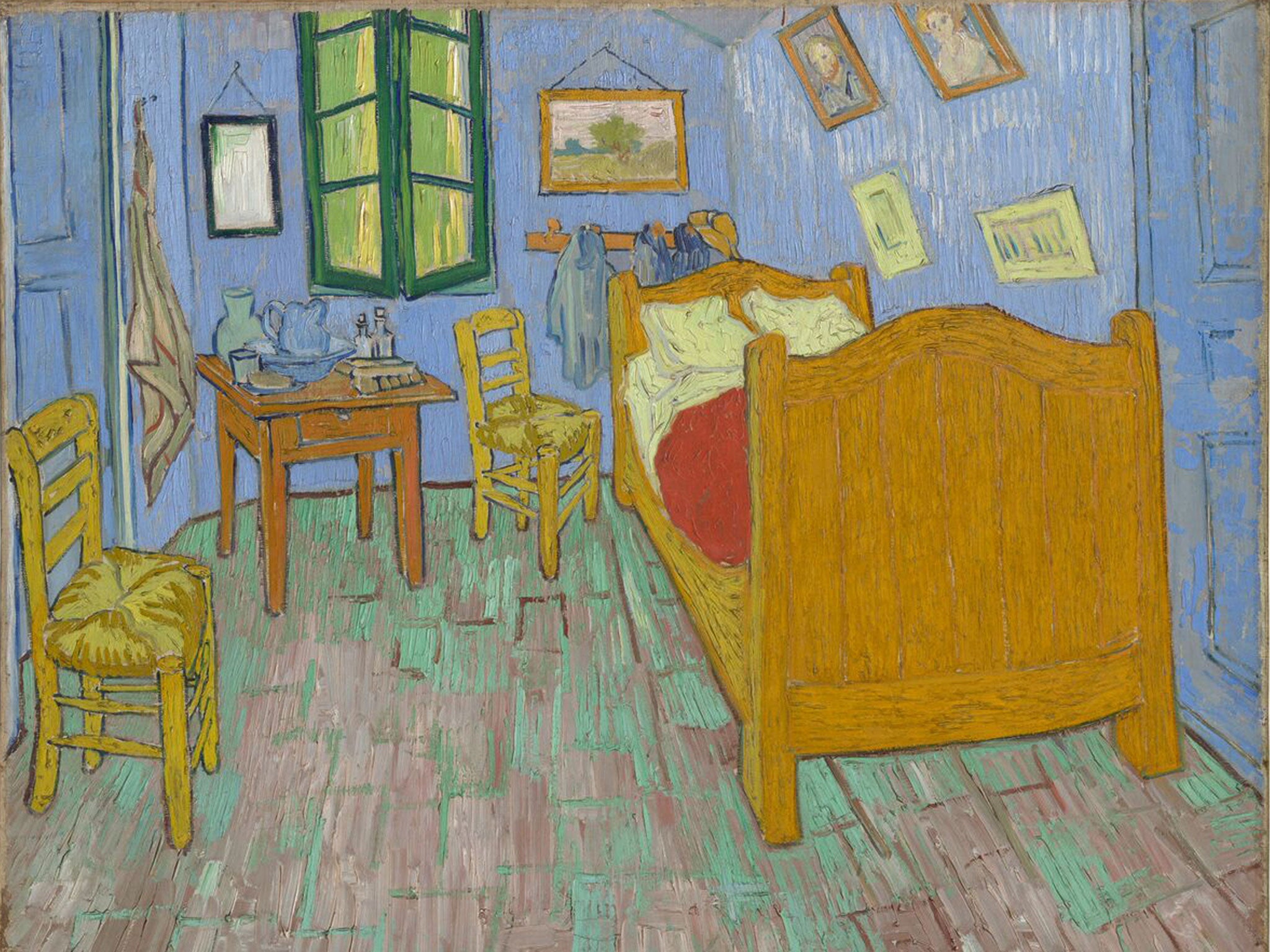Vincent van Gogh: True colours of artist's paintings revealed by scientists
Chemical analysis of microscopic fragment taken from one of the three studied paintings reveals the true colours

Scientists have recreated the original colours of Vincent van Gogh’s iconic “bedroom” paintings of the Yellow House at Arles where he lived with his friend and mentor Paul Gauguin until they fell out with disastrous repercussions for Vincent’s mental health.
A chemical analysis of a microscopic fragment taken from one of the three bedroom paintings reveals that the true colour of the walls in the picture were purple rather than the faded cornflower-blue we see today, researchers have found.
The revelation is seen as significant because the actual walls of the real bedroom itself where white, so the original colour of the walls in the paintings is being interpreted as a vivid indication of van Gogh’s emotional frame of mind, said Francesca Casadio, a scientific conservator at the Art Institute of Chicago.
“The walls of the actual bedroom in Arles were whitewashed. So the purple is his own interpretation — his own intent of expressing the resting of the mind or of the imagination,” Dr Casadio said.
It is highly unusual for an artist to paint an empty room so the fact that van Gogh did three of his bedroom at Arles, where he hoped to establish a community of artist with his friend Gauguin, is seen as an expression of his need for somewhere he could call home — especially as he had lived in 37 places in his 37 years.
Van Gogh completed his first bedroom painting in October 1988, which is now kept in Amsterdam. He did two more in September 1889, after he had cut off his ear and suffered a nervous breakdown, one is now in Chicago and one in Paris.
Even though the walls in the 1888 painting look cornflower blue today, letters written by van Gogh to his brother Theo described the colours very differently, saying he had painted the walls “pale violet”.

“In these letters he describes the colours of the bedroom. He wanted to make the picture beautiful but also to express his emotional landscape. He says he wants to paint simplicity with bright colour,” Dr Casadio said.
An X-ray fluorescence spectrogram of a microscopic fragment of paint from the walls of the first bedroom painting revealed that pigment fading had turned the colour light blue. The original colour is purple, which has not faded on the rear side of the fleck of paint that had been stuck to the canvas, Dr Casadio said.
“Three quarters of the pigments that you see in the bedroom did not exist 80 years before. They were all new inventions of the chemical industry of the time. Artists embraced them, the yellows, the reds, the pinks. Unfortunately many of them, we're finding, are changing colours,” she said.
“It’s really significant because we know the walls of that room were whitewashed, they weren’t purple at all. So in the original Amsterdam painting they convey a sense of repose, and complement other colours in the room such as the yellow of the chairs. It was meant to feel homely and more peaceful,” she told the American Association for the Advancement of Science in Washington.
“This is using scientific tools to bring us closer to the emotional state of the artist. When he wasn’t being violent he used his paintings to show that he had it together. Maybe it’s going to far to say that painting was therapy for him but in a sense it was,” she said.
Soon after completing the first bedroom painting he had fallen out with Gauguin, having confronted him with the razor that he subsequently used to slice off his own ear. The relationship with Gauguin became tense, not least because they lived in such close proximity — Gaugin’s own bedroom was next door to van Gogh’s.
Within two months of Gauguin arriving in Arles, the relationship with van Gough broke down and Vincent spent much of the next year in an asylum in nearby Saint-Remy, where he had sent for his first bedroom painting, which he told his brother he considered his best work at Arles.
In the two ater 1889 bedroom paintings, the colours become much more subdued. Everything had changed and this was reflected in his work, Dr Casadio said.
Join our commenting forum
Join thought-provoking conversations, follow other Independent readers and see their replies
Comments